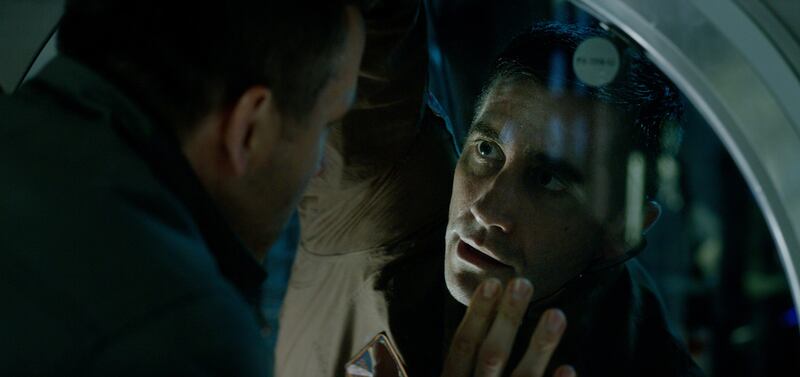Life
Director: Daniel Espinosa
Starring: Ryan Reynolds, Jake Gyllenhaal, Rebecca Ferguson, Ariyon Bakare
Three stars
An assortment of scientists, engineers and doctors stranded in space and facing off with an alien presence – Daniel Espinosa's Life was never going to win prizes for originality. Taking elements from Ridley Scott's Alien and The Martian, as well as Alfonso Cuarón's Gravity, it's a grab-bag of Hollywood sci-fi references that feel overly familiar and watered down.
Written by Rhett Reese and Paul Wernick, who are famed for the more irreverent genre-twisting Deadpool and Zombieland, Life is a bit too high-tech to be a B-movie. But that's what it is: a monster movie in space. One of its more original elements is setting it aboard the International Space Station in present day, more or less. The meticulous design of the ISS Pilgrim 7 makes it feel unnervingly real.
The story begins as a capsule returns from Mars with “the first incontrovertible proof of life beyond Earth”, as British biologist Hugh Derry (Ariyon Bakare) puts it. Joining him are a Russian mission commander (Olga Dihovichnaya) and a Japanese systems engineer (Hiroyuki Sanada), whose wife back home has just had a baby.
Also on board is the loner Dr David Jordan (Jake Gyllenhaal), whose 473 days in space means he’s about to break the world record for consecutive days in orbit; cocksure mission specialist Rory Adams (Ryan Reynolds), who is annoyingly go-getting; and Miranda North (Rebecca Ferguson), a microbiologist who specialises in disease-containment.
Swiftly, Hugh discovers under a microscope a dormant single-cell organism amid the samples from Mars. Gradually, it grows (the CGI here is quite beautiful, as the embryonic alien life form evolves) and there’s naturally hysteria back on Earth. A young girl dubs the cell “Calvin” after her school, and the name sticks.
Yet after a lab accident, Calvin goes into hibernation – until a guilt-ridden Hugh applies some electro-shock therapy. The creature awakens from its slumber and things go awry. A breathless early scene sees Hugh, with his hands in gloves reaching inside the containment unit holding Calvin, suddenly discovering just what a grip this tiny translucent starfish-like alien has. Then all hell breaks loose.
“Calvin doesn’t hate us but he has to kill us in order to live,” explains Hugh, as the creature scuttles around the ship trying to suck the life out of anything it can get its tentacles on (a poor mouse is its first – but not last – victim). At this point, Espinosa’s film becomes a pure battle for survival as Gyllenhaal et al try to figure out how to outthink this carnivorous beast.
More than likely, you’ll just spend the time pondering which character is going to die next.
Life does have some things going for it. Not unlike Gravity, the realism is impressive, with the zero gravity effects and sense of real space travel expertly achieved. Unfortunately, Espinosa (Safe House) never maintains tension throughout – it sags in places and the characters are too one-dimensional to really care about. But, credit where it's due, the finale is a nice bit of B grade movie brilliance.
artslife@thenational.ae





